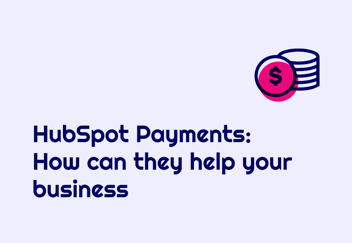Enhancing User Experience through Personalization in Email Marketing
Discover the power of personalization in email marketing and how it can enhance user experience.
Discover the power of personalization in email marketing and how it can enhance user experience.
Understanding the Importance of Personalization in Email Marketing
Personalization plays a crucial role in email marketing as it allows businesses to tailor their communication to individual recipients. By addressing each subscriber by their name and personalizing the content based on their preferences, businesses can create a more engaging and relevant experience for the users.
Personalized emails have a higher chance of grabbing the attention of the recipients and standing out in crowded inboxes. It helps in building a stronger connection with the users, making them feel valued and understood.
Moreover, personalization in email marketing can lead to higher open rates, click-through rates, and conversions. When users receive emails that are specifically tailored to their needs and interests, they are more likely to engage with the content and take the desired action.
Understanding the importance of personalization in email marketing is essential for businesses to effectively engage with their audience and drive better results.
Implementing Personalization Strategies for Better User Engagement
To enhance user engagement through personalization in email marketing, businesses can implement various strategies. One of the key strategies is segmenting the email list based on user demographics, preferences, behavior, or purchase history. By dividing the audience into smaller, targeted segments, businesses can deliver more relevant content to each group, resulting in higher engagement.
Another effective strategy is using dynamic content in emails. Dynamic content allows businesses to display different versions of the email content based on the recipient's characteristics or actions. For example, showing personalized product recommendations based on the user's browsing history or previous purchases.
Additionally, businesses can leverage personalization tokens to insert dynamic information, such as the recipient's name, location, or recent activity, into the email content. This creates a personalized touch that resonates with the users and makes the email feel more tailored to their needs.
Implementing personalization strategies is crucial for businesses to maximize user engagement and drive better results from their email marketing campaigns.
Utilizing Data to Tailor Email Content
Data plays a key role in personalizing email content. By collecting and analyzing data about the recipients, businesses can gain valuable insights into their preferences, behavior, and interests. This data can then be used to tailor the email content and create a more personalized experience.
One way to utilize data is by sending targeted emails based on the recipient's past interactions with the business. For example, if a user has recently purchased a product, sending a follow-up email with related product recommendations can be highly effective.
Businesses can also leverage data to personalize the subject lines and email copy. By analyzing the recipient's past engagement patterns, businesses can craft compelling subject lines that are more likely to grab their attention and increase open rates.
Overall, utilizing data to tailor email content allows businesses to deliver more relevant and engaging messages to their audience, resulting in a better user experience.
Creating Dynamic Email Campaigns for Individualized Experiences
Creating dynamic email campaigns is an effective way to provide individualized experiences to the users. Dynamic emails are emails that change and update based on the recipient's behavior or preferences.
One example of a dynamic email campaign is an abandoned cart email. If a user adds products to their cart but doesn't complete the purchase, businesses can send a personalized email reminding them about the items in their cart and offering a discount or incentive to encourage them to complete the purchase.
Another example is a personalized birthday email. By collecting the recipient's birthdate, businesses can send them a special birthday email with exclusive offers or discounts, making them feel valued and appreciated.
Creating dynamic email campaigns allows businesses to deliver highly targeted and personalized experiences to each individual user, increasing their engagement and likelihood of taking the desired action.
Measuring Success and Optimizing Personalization Efforts
Measuring the success of personalization efforts is crucial for businesses to understand the effectiveness of their email marketing campaigns and make data-driven optimizations.
One key metric to track is the open rate of personalized emails. A higher open rate indicates that the personalized content is resonating with the recipients and grabbing their attention.
Click-through rate is another important metric to measure. It shows how many recipients are engaging with the email content and clicking on the links or calls-to-action. A higher click-through rate indicates that the personalized content is compelling and driving user engagement.
Conversion rate is the ultimate measure of success. It shows how many recipients are taking the desired action, such as making a purchase or signing up for a service, as a result of the personalized email. By tracking the conversion rate, businesses can determine the effectiveness of their personalization efforts in driving the desired outcomes.
Based on the metrics and insights gathered, businesses can optimize their personalization efforts. This can include refining the segmentation criteria, testing different personalization strategies, or experimenting with different types of dynamic content. Continuous optimization is essential for businesses to maximize the impact of personalization in email marketing.
Your ultimate guide to strategic outsourcing
Subscribe for expert tips, trends, and tailored solutions.



